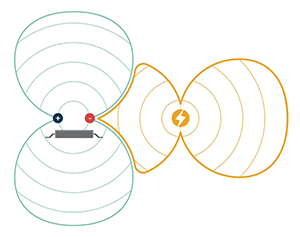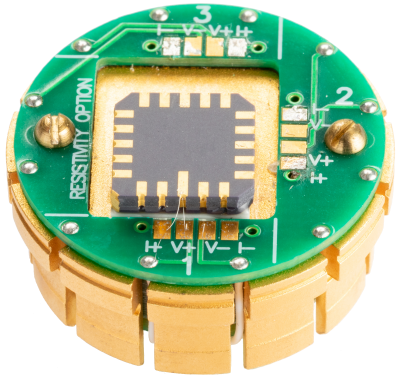
November is Magnetic Sensing Month at Magnetics Magazine!
Stay tuned and check the website frequently for new updates on the latest technology for magnetic sensing.
Bolstered by £16.2 million in investor funding and a new collaboration with CERN, UK-based Paragraf is striding forward to commercialize its breakthrough graphene Hall Effect sensor which could be a gateway to next generation magnetic field sensing. Measured to be 30 times more precise than a silicon Hall Effect sensor, the company says, it delivers the unique two-dimensional properties of graphene for highly precise magnetic field measurement. Potential applications for sensing and control include scientific research, healthcare, aerospace, industrial and automotive markets.

In an interview with Magnetics Magazine in August, Paragraf CEO Simon Thomas gave this account of what he foresees as the most likely initial and most compelling commercial applications for the sensors:
“Owing to the highly reliable cryogenic operation and the large field measurement range, the GHS is finding many applications in scientific markets. Researchers and end users working with strong resistive and superconducting magnets at accelerator facilities like CERN and at other specialist high field and low temperature research institutes really value this capability,” said Thomas. “The unbeatable resolution and lack of planar Hall effect is enabling them to undertake measurements which were not before possible, this capability also permits accurate measurements in the very low field range.”
“As a result, manufacturers of equipment supplied into this market are taking interest in incorporating sensors into their products, offering end users ready-made solutions. Projecting forward, we are seeing comparable opportunities to address needs in the healthcare, aerospace, energy and transport sectors – who value the same capabilities from the GHS, but where adoption timelines are significantly longer.”
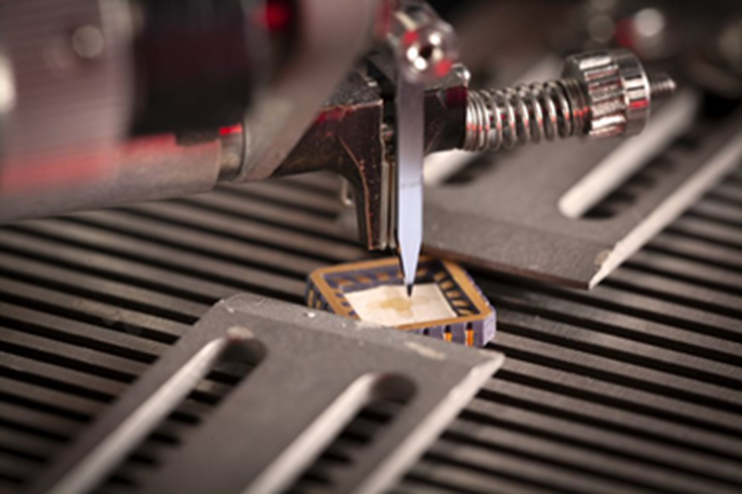
In June, Paragraf embarked on a working partnership with the Magnetic Measurement section at CERN, the European Organization for Nuclear Research, with both parties set to demonstrate how new opportunities for magnetic measurements are opened up through the unique properties of its graphene sensor, particularly its negligible planar Hall effect.
“This collaboration with CERN demonstrates the potential of graphene-based Hall effect sensors to improve accuracy in magnetic measurement applications. Our Hall effect sensors address key challenges CERN is facing in mapping magnetic fields, namely: highly accurate measurements of local field distributions in accelerator magnets, while eliminating artifacts and reducing uncertainties stemming from the sensors,” said Thomas.
CERN operates the largest particle accelerators in the world, for example its 27-km long, Large Hadron Collider which straddles the border between Switzerland and France near Geneva. Physicists look at how our world is built at the fundamental level by colliding sub-atomic particles in particle accelerators that rely on large numbers of normal and superconducting magnets to steer and focus the particle beam to their collision points.
The Magnetic Measurements section at CERN tests magnets for these accelerators using the latest-available techniques and instruments. High precision and reliable measurements are performed for many of their projects, so they are continually seeking new sensors and transducers for improving methods and accuracy.

Existing Hall effect sensors all exhibit planar Hall effects where field components which are not perpendicular to the sensing plane produce false signals. This is because the sensing layer is effectively three-dimensional, with some amount of depth. These false signals, together with the non-linear response to the field strength, increase the measurement uncertainty and thus limit the application of Hall sensors. Separating the true signals from the systematic errors is a complex and time-consuming process.
The Hall effect sensor from Paragraf solves these problems because the active sensing component is made of atomically thin graphene. Since the material is two-dimensional, it only senses magnetic fields along one direction, giving a negligible planar Hall effect. This enables the true perpendicular magnetic field value to be obtained, allowing for higher precision mapping of the local magnetic field.
“Using Hall effect sensors without planar effect would open the door to a new mapping technique by mounting a stack of sensors on a rotating shaft. The compelling advantage would be measurements of the harmonic content in accelerator magnets almost point-like along the magnet axis”, commented Stephan Russenschuck, head of the magnetic measurement section at CERN.

In December, Paragraf raised another £3.4m to bring its series A round funding to a total of £16.2m, enabling the company to accelerate the delivery of its first graphene-based electronics products to market, transitioning the company into a commercial, revenue-generating entity. Presently the company is providing its sensors to lead partners in small volumes for testing and product development efforts. Based in north of Cambridge in Somersham, the company is a spin-out from the Department of Materials Science at the University of Cambridge.
Graphene for magnetic field measurement
The extraordinary properties of graphene have been known for over 15 years. However, to date, the nanomaterial has not delivered on its potential in electronic device applications because of how it is manufactured and processed. Paragraf has developed a process which overcomes these issues.
Hall-Effect sensors are used in many applications, from measuring magnetic fields and electric currents to timing the speed of wheels and shafts. However, existing products have a limited temperature range, sensitivity, accuracy and magnetic field range. The electrical conductivity, inherent thinness and flexibility of graphene have meant that it has received significant attention as a revolutionary material for electronics devices. However, significant barriers to adoption in mass-market electronics remain due to the lack of contamination-free, transfer-free, large-area graphene.
As silicon transistors reach the limits of their performance, new solutions are required, and graphene is one of the front runners for this paradigm shift. To date, many leading electronics companies such as Intel, IBM, and Samsung, have collectively invested billions in attempting to bring electronic devices made from graphene to market.
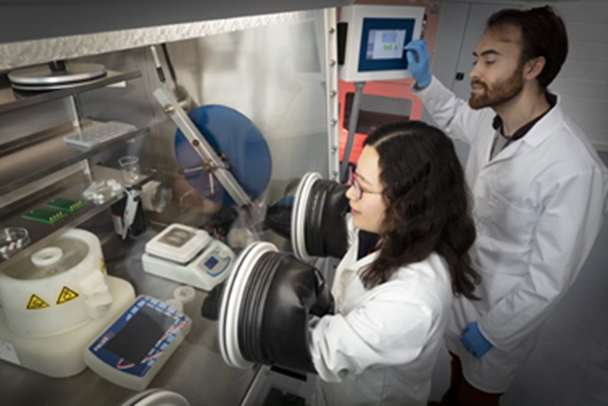
Paragraf has developed a new method of producing graphene that makes it suitable for electronic devices. Its patented process uses scalable processes to allow the manufacturing of large-area, high-quality graphene, currently up to 8” diameter. The approach uses a modified deposition method that removes the need for the transfer processes commonly used in most graphene synthesis methods. The graphene can be grown in a uniform, single layer directly on a wide range of substrates. As well as producing large-area graphene for electronics, Paragraf has commenced electronic device production by launching its own Hall-Effect sensor.
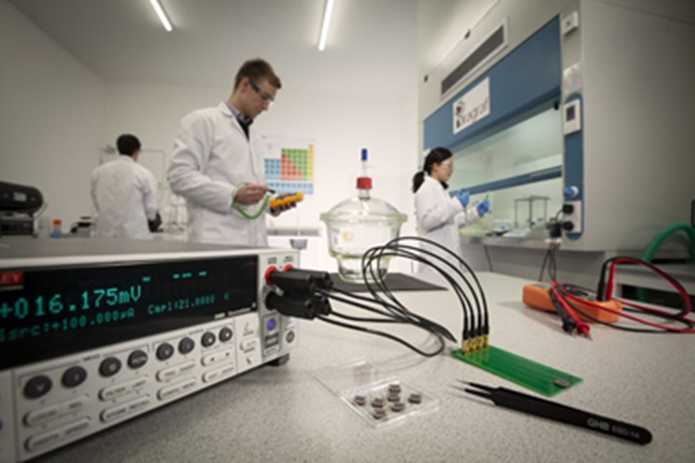
The lack of a planar Hall-Effect is due to the inherent thinness of monolayer graphene, which is a single layer of carbon atoms. This results in a negligible planar Hall-Effect, meaning false signals are not induced. It enables only the actual perpendicular magnetic field value to be obtained, allowing for higher precision mapping of magnetic fields. Paragraf’s graphene Hall-Effect sensor is the only Hall-Effect sensor on the market where the planar Hall-Effect does not affect measurement accuracy, says the company.
The Hall-Effect sensor is a specialist sensor that measures the magnitude of a magnetic field. Its output voltage is directly proportional to the magnetic field strength through it. The Hall-Effect is the production of a voltage difference, the Hall voltage, across an electrical conductor when a mutually perpendicular electric current and magnetic field are applied.
One of the issues with traditional Hall-Effect sensors is the thickness of the sensing material, which causes the sensing layer to be three-dimensional. This causes field components that are not perpendicular to the sensing direction to also be sensed, and as a result, false signals are produced. This is known as the planar Hall-Effect. These false measurement signals then become mixed with the real signals and are incorporated into the data of the magnetic field map. As a result, this can give a false impression that there are additional magnetic poles present when there are none. These false poles are known as pseudo-multipoles and can significantly reduce the accuracy of the measurements. It is possible to separate the real signals from the false signals manually. However, this is a complicated and time-consuming process.
In another partnership, with the National Physical Laboratory as part of an Innovate UK funded project, the suitability of Paragraf’s sensor in high radiation environments is being investigated to see if it might be more robust than traditional Hall-Effect sensors. Other work is ongoing with the University of Cambridge, the NPL and other partners to further investigate the suitability of the sensors to a wide range of commercial applications.
For more info, see www.paragraf.com.

